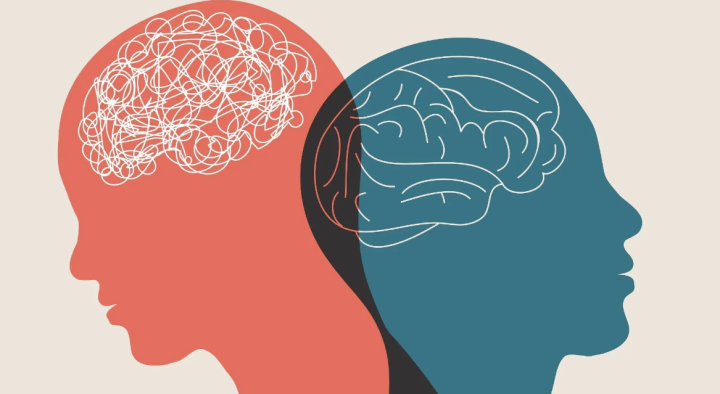SPONSORED CONTENT
5 ways companies can support the mental wellbeing of low-income employees and those battling mental health issues

If you’re an employer – or manage employees – you wield more power over the mental health of your workforce than you probably realise.
Almost 70% of employees say their manager has the same impact on their mental health as their spouse or partner – and even more influence than their doctor (51%) or their therapist (41%). Furthermore, research by The Workforce Institute reveals that for 60% of employees, their job is the biggest factor influencing their mental health. Poor mental health in the workplace is a serious problem that has been amplified by the Covid pandemic, costing the global economy US$1 trillion annually in lost productivity, according to the World Health Organisation.
‘One in four South Africans report to be clinically depressed at work,’ says Dr Frank Magwegwe, Faculty at the Gordon Institute of Business Science (GIBS). ‘And this estimate is on the low side, according to the South African Depression and Anxiety Group, because there are many more who don’t disclose their mental health issues for fear of being stigmatised, and many others suffer but haven’t been diagnosed.’ He points out that in Corporate SA, anxiety has now overtaken depression as the number one presenting mental health issue. It’s therefore critical that employers put the right structures and training (especially for managers) in place to support the mental health of their workforce.
TIP 1: Identify vulnerable groups
‘Employers have a duty of care to look after the wellbeing of all employees, not only the vulnerable ones,’ says Magwegwe. Therefore, company employee wellness programmes generally aim to boost the mental and physical wellbeing of the entire workforce. However, he explains that in addition to the universal programme, it’s beneficial to also offer targeted interventions that support specific groups who are already battling – or are at high risk of – experiencing mental health issues (such as anxiety, chronic stress, depression or burnout, amongst others). ‘For example, low-income earners fall easier into financial stress which often leads to mental health issues, simply because they don’t have any financial buffers when interest rates rise or the cost of living goes up,’ says Magwegwe. He explains that lower income female employees and single parents also often report elevated financial stress levels. Debt Busters’ 2023 Money-Stress Tracker says four out of five women in South Africa are more stressed about their finances, home, and work life than their male counterparts. Providers of employee wellness programmes (EWP) can increasingly provide real-time, anonymised data on the top mental health issues and types of stressors that affect employees, which helps companies identify which groups need targeted interventions.
Tip 2: Train the managers
The relationship between manager and employees is of paramount importance to mental wellbeing, as indicated by the Workforce study. A 2019 South African survey by CareerJunction noted that a third of South African employees quit their jobs because of their bosses. It found that 27% of respondents have nightmares, 18% seek mental health support and 12% drink heavily because of their boss’s behaviour. While there are various ways to improve the professional relationship (for example, looking at the communication style, expectation and working conditions), managers should also receive mental health training. This should cover how to spot symptoms of mental health issues and how to respond in a non-judgemental way. ‘When an employee opens up about their mental health issue, their manager often says “ag shame”, stays silent or talks about their own problems,’ says Magwegwe. ‘Instead, they should actively listen, and find out what exactly the employee needs.’ Ideally, they should encourage the staff member to access the employee wellness programme (EWP) and, where needed, get referred to relevant health professionals.
However, managers mustn’t overpromise when it comes to time off or changes to the employee’s work schedule, advises Harvard Business Review. ‘Instead, make clear that your intention is to partner with them to sort it out. For example, you might say, “I hope I’ve made it clear that you are a valuable member of this team and organization. We’ll figure this out together.” You don’t have to have all the answers readily available.’
Tip 3: Connect via multi channels
Multi-channel platforms enable companies to reach as many employees as possible and connect them to resources, such as the EWP or other support programmes. For those who prefer digital interactions, there are mental health apps. Magwegwe introduced the Panda Mental Health App to GIBS, as a gamified digital tool to triage people who feel emotionally unwell, and match them with the right care when they need it. Users can access self-help content as well as live audio group sessions on a wide range of mental wellbeing topics. It’s a helpful channel for vulnerable staff members, for example lower-income earners, single parents, or those with diagnosed mental health issues, as they can interact anonymously with their own community of peers, whenever they want, and access personalised information.
Other channels can, for example, include websites, newsletters, face-to-face meetings such as team building or presentations by mental health experts, phone helplines, and text-based chat support via SMS or WhatsApp.
TIP 4: Bully-proof the workplace
Bullying in the workplace is a major source of poor mental wellbeing, especially for employees who are already marginalised or suffering mental health issues, says Magwegwe. It can even lead to psychological trauma and increase the risk of suicide. In March 2022, South Africa’s new Code of Good Practice on the Prevention and Elimination of Harassment in the Workplace came into effect, making it the employers’ duty to prevent bullying (including cyber-bullying) in the workplace. Bullying comes in many forms, ranging from insulting, demeaning and intimidating behaviour, to verbal threats, shaming, teasing, or racist and sexist language. There is also subtle bullying, which according to Dr Ngao Motsei, Adjunct Faculty at GIBS, can include overbearing supervision, micro-managing, social exclusion, taking credit for work done but blaming the victim when things don’t go well. Her steps to bully-proof your workplace include, but are not limited to, the following:
- Develop and enforce anti-bullying policies; guidelines on what employees must do in case of bullying; and reporting procedures, both confidential and publicised
- Protect employees from victimisation for speaking out against being bullied or witnessing others being bullied
- Promote positive leadership by training key managers on effectively communicating and engaging
- Create a climate for honest and regular two-way feedback delivered in a respectful way
- Communicate back to both bullying targets and those who reported witnessing the bullying.
TIP 5: Check in with remote workers
‘The rise in hybrid and work from home (WFH) models is associated with many mental health downsides that companies must address,’ says Magwegwe. He gives the example of loneliness, because many people would normally get their social interactions in the office, but now they work in isolation. And then there is the blurring of boundaries through WFH, as opposed to pre-pandemic when office and home life were separate. Gallup advises managers to plan regular conversations with each of their ‘direct reports’ and include them in important decisions. The U.S. research firm adds, ‘Pay attention to subtle ways that new hybrid or flexible policies can ostracise certain employees.’
It’s important to note that while the workplace – and managers – significantly impact the mental health of employees, it isn’t only a one-way street leading to negativity. Employers can play a positive role in their employees’ lives and boost their wellbeing by treating them fairly, with respect and empathy, and providing the right mental health support when needed. DM
















